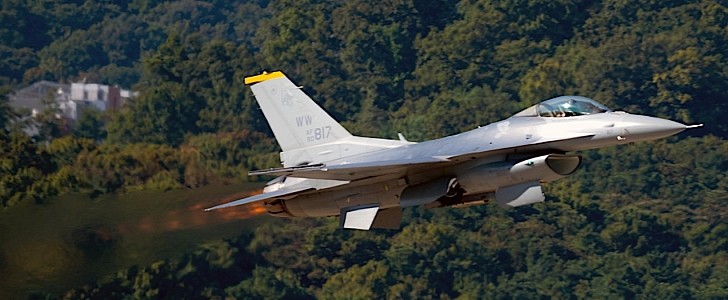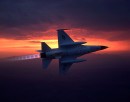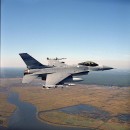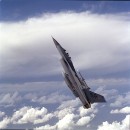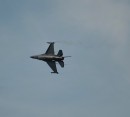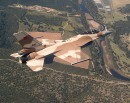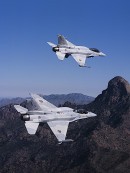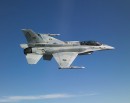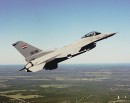The F-16 Fighting Falcon is one of the most widespread military aircraft in existence, if not the most widespread. Thousands of them are currently in service, patrolling the skies over America and most of its allies as one of the most capable such machines out there.
When something is common, that generally means people get tired of it in one way or another, but for some reason, not the same can be said about the F-16. Despite the large numbers and the constant presence overhead, the Lockheed Martin machine is still impressive enough to turn curious heads every time it shows up.
The American military contributes to the general public’s appetite for the plane by constantly releasing new images of it, doing things ordinary civilians do not usually get to see. Like, say, taking off from a military base.
That’s exactly what we see here, an F-16 deployed with the U.S. Air Force in South Korea, its landing gear in the process of being retracted and the afterburner of the single engine running hot as it pushes the airplane into the sky, apparently transforming the landscape behind it into a melting blur. The plane was on its way, says the USAF, to “bolster the U.S.-Republic of Korea alliance.”
When fully engaged, the airplane’s engine, afterburner included, can power the F-16 to speeds of up to 1,535 mph (2,470 kph), which is Mach 2, or two times the speed of sound. The distance the airplane can cover in a single outing is 2,620 miles (4,217 km).
Two elements conspire in making the F-16 one of the most constant presences in the sky over our world. Having been introduced in the 1970s and produced in over 4,000 examples across countless variants, the Fighting Falcon already clocked close to 20 million flight hours, achieved at the end of over 13 million sorties.
The American military contributes to the general public’s appetite for the plane by constantly releasing new images of it, doing things ordinary civilians do not usually get to see. Like, say, taking off from a military base.
That’s exactly what we see here, an F-16 deployed with the U.S. Air Force in South Korea, its landing gear in the process of being retracted and the afterburner of the single engine running hot as it pushes the airplane into the sky, apparently transforming the landscape behind it into a melting blur. The plane was on its way, says the USAF, to “bolster the U.S.-Republic of Korea alliance.”
When fully engaged, the airplane’s engine, afterburner included, can power the F-16 to speeds of up to 1,535 mph (2,470 kph), which is Mach 2, or two times the speed of sound. The distance the airplane can cover in a single outing is 2,620 miles (4,217 km).
Two elements conspire in making the F-16 one of the most constant presences in the sky over our world. Having been introduced in the 1970s and produced in over 4,000 examples across countless variants, the Fighting Falcon already clocked close to 20 million flight hours, achieved at the end of over 13 million sorties.
